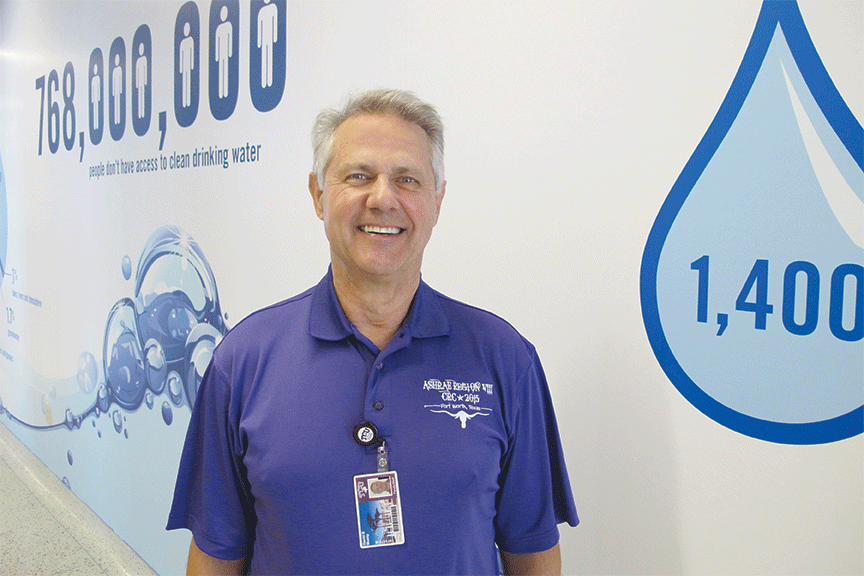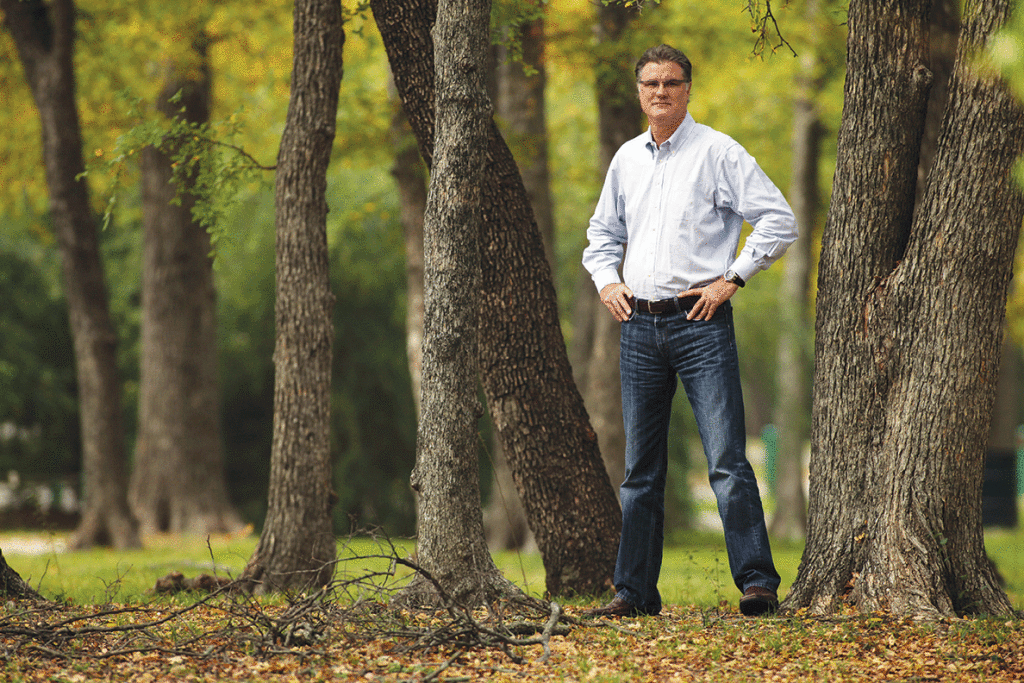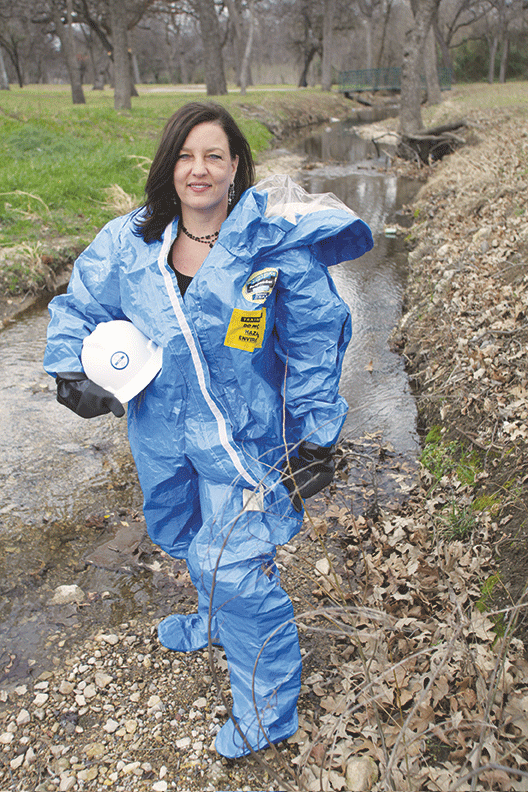How can we conserve water for the future?
Three TCU water experts weigh in with practical advice.

TCU Energy Manager David Muzzy.
How can we conserve water for the future?
Three TCU water experts weigh in with practical advice.
Mike Slattery
Director of TCU’s Institute for Environmental Studies
Water is undoubtedly our most precious resource (ask any Californian). But how can we conserve water when thermoelectric power and irrigation remain our largest uses? In terms of indoor use, there is actually quite a lot people can do. Start by repairing leaky faucets and toilets, or better yet, if you don’t already have them, install low-flow showerheads, faucets and toilets.

Mike Slattery is director of TCU’s Institute for Environmental Studies.
Do fewer, larger loads of laundry (almost one-fifth of indoor home water use comes from doing laundry). And shower; don’t bathe; it’s far more efficient. According to a 2014 Indiana University study, cutting shower time down to five minutes (from the average eight minutes) would reduce household indoor water use by about eight percent. Pandora, the digital radio service, even is helping people make the change with a playlist that doubles as a shower timer.
But household water savings can go down the drain for households with yards. Nearly two-thirds of a household’s water footprint goes toward lawn and garden maintenance. Water lawns only when they need it, or better yet, use native plants.
The really good news is that water use in the U.S. now is estimated to be about 15 percent less than in 2005. In fact, current estimates put total water withdrawals at the lowest level since before 1970.
Becky Johnson
Professor of Professional Practice in Environmental Sciences
We must not forget that energy and water are intertwined. Saving energy saves water too.
First, if you can afford it, replace washing machines with EnergyStar appliances. These appliances save energy by significantly reducing the amount of water used during the wash cycles. Less water to heat, and less water remaining for the drying cycle all equals water savings of 100-200 percent, and washing machines account for about 15-40 percent of total indoor water usage.

Becky Johnson has over 23 years of experience in environmental management.
Another suggestion: Replace old, high-volume toilets with new, low-volume toilets. Many cities, including Fort Worth, offer free replacement toilets for residents based on the age and water volume of the existing toilet. Toilets are about 30 percent of total indoor water use, so this has a big impact.
A third suggestion: Replace high-volume a showerhead with a low-flow showerhead. [If that’s not financially feasible], then take shorter showers. Plus, add flow restrictors to bathroom faucets, which increase the water pressure while reducing the flow. Together, showerheads and faucets are about 30 percent of total indoor water usage.
A final suggestion: Reduce lawn watering. Replace water-intensive grasses, such as St. Augustine, with low water-demand varieties. Better yet, remove the grass and use drought-tolerant native plants to create beautiful garden habitats for birds, bees and butterflies. Landscape watering accounts for 40 percent of water use during summer months.
David Muzzy
Energy Manager at TCU
How is TCU conserving water? During the past four years, the university purchased on average 190 million gallons of water annually from the Fort Worth Water Utilities.
At TCU, irrigation consumes about 75 million gallons each year, and the chiller plant uses about 50 million gallons each year. Excluding irrigation and the chiller plant, this equates to an average of 15 gallons per person per day based on a campus population of 12,000 people. This personal usage includes urinals (approximately 330 on campus), water closets (2,200), lavatories (2,900), showers (1,500) and drinking fountains (450).
TCU has low-flow fixtures in most locations along with motion-activated fixtures. A recent water audit offered several recommendations to reduce domestic water consumption by up to 4.6 percent. The university is evaluating the recommendations.
The irrigation system was updated with an evapotranspiration device in August 2011. It measures the moisture in the ground, and based on the type of plant, the system prevents over-watering. The device helped reduce irrigation water usage by as much as 15 percent annually.
Reclaimed water is being produced by the Fort Worth Water Utilities. Unfortunately, it is not available in the TCU area. This is something that the university would consider for irrigation water when it becomes available.
The university will continue to monitor and collect data on water consumption and look for opportunities to conserve and reduce the use of water on campus.

Your comments are welcome
1 Comment
How about saving money on the cost of the water coming from The Fort Worth Water Utilities?
Related reading:
Features, Research + Discovery
The Case of the Disappearing Groundwater
Sharra Blair-Kucera left a 20-year career in manufacturing to study water conservation and resource management. She found that Texas is running out of groundwater.
Campus News: Alma Matters
Spring Breakout
Forget South Padre. Spring Break has become an intensified mini-mester of out-of-classroom learning, often overseas.
Research + Discovery
Waste Management Is Key to Preventing Ocean Pollution
Students tackle problematic plastics during Frog Forum.